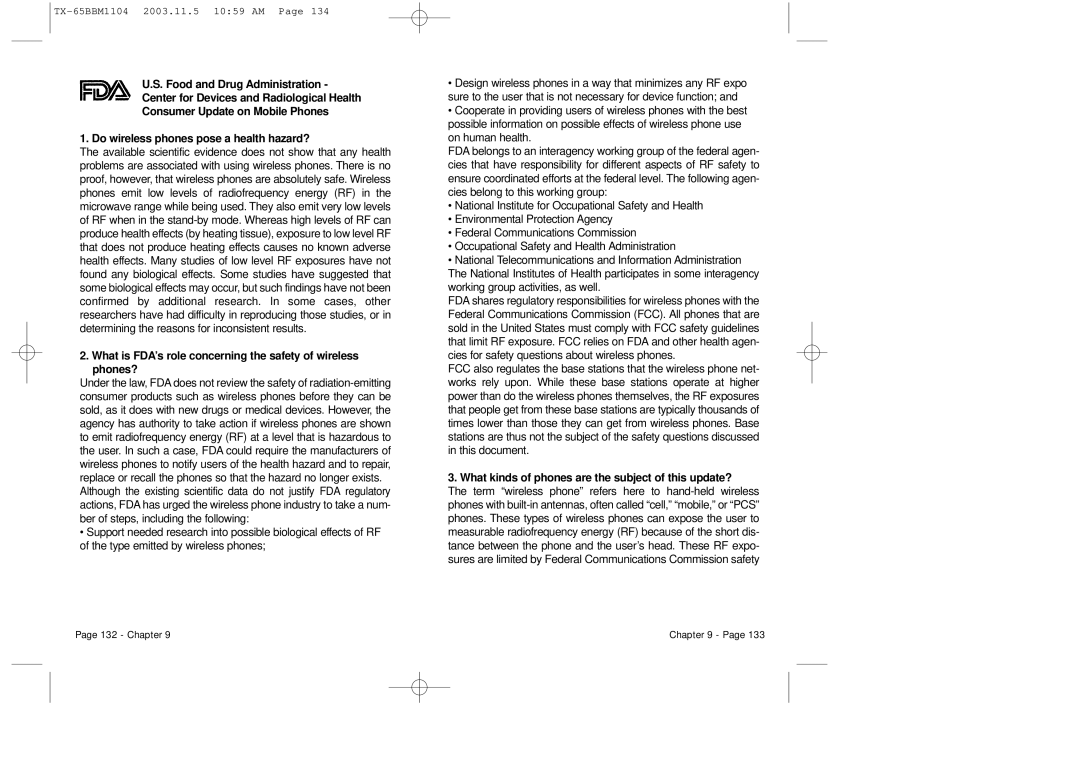CDM 8450 specifications
The Audiovox CDM 8450 is a mobile phone that was notable during its time for offering a blend of essential features and reliability targeted primarily at users who valued straightforward functionality alongside certain modern conveniences. Launched in the early 2000s, this device had an appealing design that often attracted users looking for a compact, easy-to-use handset.One of the key features of the Audiovox CDM 8450 was its dual-mode capability, allowing it to function on both CDMA and analog networks. This dual functionality meant that users could enjoy coverage in areas where CDMA service was not available, ensuring a wider range of connectivity options.
The phone also boasted a well-designed interface that included a vibrant color display, which was relatively advanced for its time. The display enabled users to easily navigate through menus and access various features. An intuitive keypad layout provided comfortable typing and dialing, rounded off with a compact size ideal for carrying in pockets or bags.
In terms of multimedia, the CDM 8450 supported basic SMS and picture messaging, which was becoming increasingly popular. Users were able to send and receive text messages seamlessly, enhancing communication possibilities. Although it did not offer the sophisticated multimedia capabilities seen in later smartphones, the phone's simplicity allowed it to excel in basic communication tasks.
The Audiovox CDM 8450 was powered by a robust battery that provided reliable talk and standby time, crucial for users on the go. The durability of the battery was one of the strong selling points, making it a dependable option for those who needed their phone to last throughout the day.
For connectivity, the device offered infrared capability, which allowed users to transfer small amounts of data between devices quickly. This feature was useful for sharing contacts or calendar information with others without needing physical connections.
The phone was also equipped with an array of features such as a built-in speakerphone, customizable ringtones, and an address book that could store a substantial number of contacts. The solid build quality and user-friendly features made the Audiovox CDM 8450 a popular choice among consumers looking for a capable and affordable mobile phone during its era. Overall, the Audiovox CDM 8450 represents a stepping stone in the evolution of mobile technology, laying the groundwork for more advanced devices in the future.

